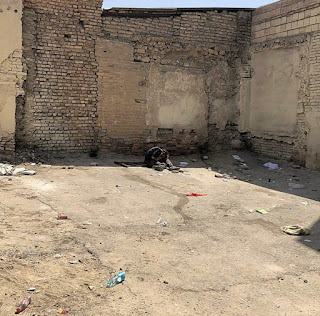Invisible Bodies; the Urban Life of Drug Users in Harandi Neighbourhood, Tehran (Book Chapter)
 |
| Photo by Mahsa Alami Fariman |
This book chapter (in Lee et al.[Eds] City, Public Space and Body; The Embodied Experience of Urban Life, Routledge) takes the concept of dangerous/dangerous bodies to reflect on the life of drug users who live in the notorious, decayed urban spaces of Harandi Neighbourhood in south of Tehran. Providing an ethnographic account of the life of the ‘invisible citizens’, the chapter will explore themes such as invisible bodies, public and private space, behavioural codes and bodily gestures. The narration will overlap with the categories of the deviance and social disorder, discussed by Durkheim and Parsons, exploring power and its effect on people’s capacity to be present in the city. Through the theoretical lens of ‘the right to the city’, and by reflecting on the stories of ‘Khane Khorshid’ (The Sun’s House), the paper sheds light on the issues of poverty, sexual abuse, the structural violence and the abuse of power in this neighbourhood. The objective is to bring out the stories of a community that claim to be invisible.

Comments
Post a Comment